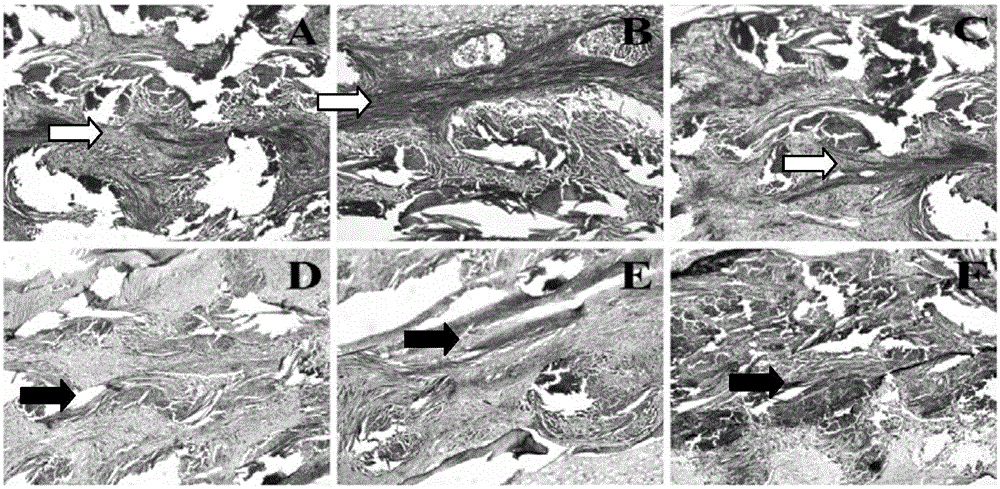Method for staining hard tissue slices using picrosirius red and application of method
A technology of Sirius scarlet and dyeing method, applied in the biological field, can solve the problems of cumbersome steps, high cost, complicated operation, etc., and achieve the effects of reducing observation errors, low cost, and short time.
- Summary
- Abstract
- Description
- Claims
- Application Information
AI Technical Summary
Problems solved by technology
Method used
Image
Examples
Embodiment Construction
[0017] The present invention will be described in detail below in conjunction with the accompanying drawings and embodiments.
[0018] Preparation and transplantation of silk ligament grafts: knitting silk threads with flat needles on a knitting machine to form a network structure, after desericin, freeze-drying silk solution in partitions to create a spongy structure (inner area), and modifying hydroxyapatite after the silk solution is freeze-dried stone (external zone). After irradiation and disinfection, bone marrow mesenchymal stem cells were planted in the inner area, osteoblasts were planted in the outer area, and then rolled into a cylindrical shape and implanted into the established rabbit anterior cruciate ligament defect model.
[0019] 1) Samples were collected 1, 2, and 3 months after the implantation. When the samples were collected, the animals were sacrificed, and about 5 cm of the distal end of the femur and the proximal end of the tibia after the transplantati...
PUM
 Login to View More
Login to View More Abstract
Description
Claims
Application Information
 Login to View More
Login to View More - R&D
- Intellectual Property
- Life Sciences
- Materials
- Tech Scout
- Unparalleled Data Quality
- Higher Quality Content
- 60% Fewer Hallucinations
Browse by: Latest US Patents, China's latest patents, Technical Efficacy Thesaurus, Application Domain, Technology Topic, Popular Technical Reports.
© 2025 PatSnap. All rights reserved.Legal|Privacy policy|Modern Slavery Act Transparency Statement|Sitemap|About US| Contact US: help@patsnap.com


